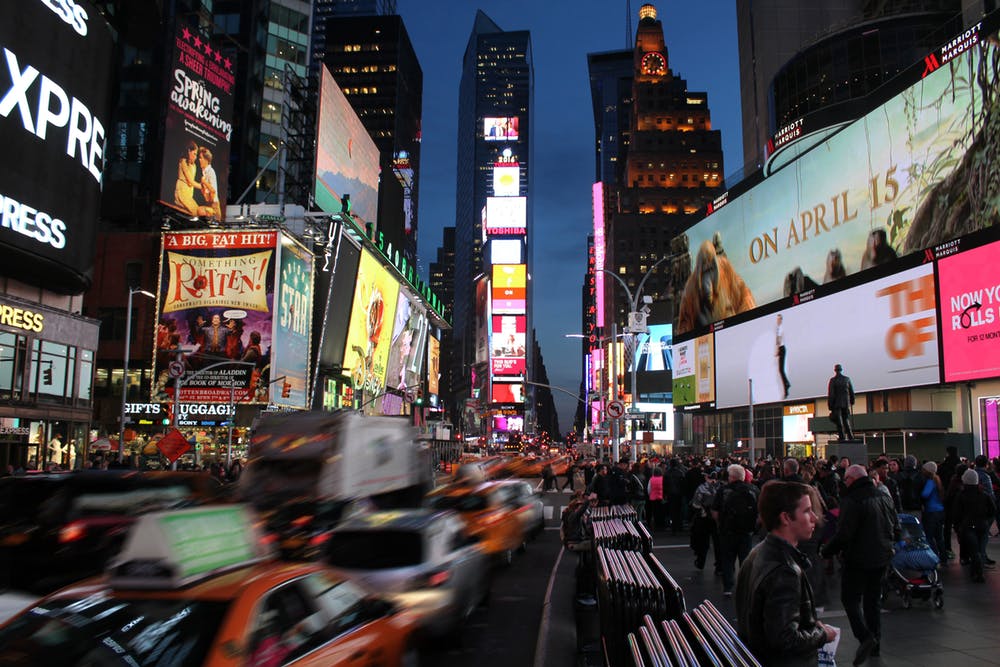 Out of home advertising (OOH), sometimes referred to as out-of-home media, is advertising that reaches its targeted audience when they are outside of their home. Out of home advertising attempts to target consumers when they are on the go. Billboards along freeways, backlit displays and posters in public spaces are some common examples of OOH advertising.
Out of home advertising (OOH), sometimes referred to as out-of-home media, is advertising that reaches its targeted audience when they are outside of their home. Out of home advertising attempts to target consumers when they are on the go. Billboards along freeways, backlit displays and posters in public spaces are some common examples of OOH advertising.
Billboards and other forms of OOH capture the attention of consumers who are outside and not consumed with any other media while on the go. However, the ubiquity of smartphones has made it necessary for billboards to evolve into digital full motion displays instead of the traditional static images.
Consumers spend a great deal of their time traveling on roads, be it driving to work or walking down the street to the corner shop for basic supplies. This means that there are always opportunities for advertisers to reach a target demographic.
Interesting Facts About OOH Advertising
Even though online ads are what usually come to mind when advertising is brought up nowadays, the OOH advertising market can also be a fantastic opportunity for brands. In fact, OOH is still booming. Here are some statistics to illustrate that point.
- There are over 25 million out of home advertising placements across the United States.
- 1 billion trips are made on the road every single day—each of these trips is an opportunity to reach a consumer with out of home advertising.
- Out of home advertising delivers more than 100 billion impressions per week.
- Billboards make up 66% of the OOH advertising market and a growing portion of these are digital billboards in major cities like Los Angeles and New York.
- Consumers are 50% more likely to engage with a mobile ad after seeing the same ad on a billboard or other OOH advertisement.
The majority of outdoor advertising is done via billboards and full-motion digital billboards are becoming more commonplace as they allow advertisers to deliver a highly rich experience, instead of static images.
Out of home advertising, especially high-visibility full motion digital billboards are highly effective for both national brands and local ones such as high-end restaurants, hotels and law firms.
The Digital Revolution
With the advent of digital billboards and small digital screens it has become possible to develop and optimize highly responsive campaigns. This means that each campaign can be designed for a very niche audience and be refined and optimized easily and in a cost-effective manner.
This digitalization of the outdoor advertising model has also spread to mobile billboards—many billboard trucks now provide full motion LED displays which provide an immersive experience for consumers.
With the wealth of data that can be collected from mobile consumers as they engage with digital billboards, advertisers can improve their message and customize it to an extent which has never been possible before.
As the industry matures, and innovates, the level of sophistication will likely grow to match that of online advertising.
You may be interested in: “What is advertising?”

